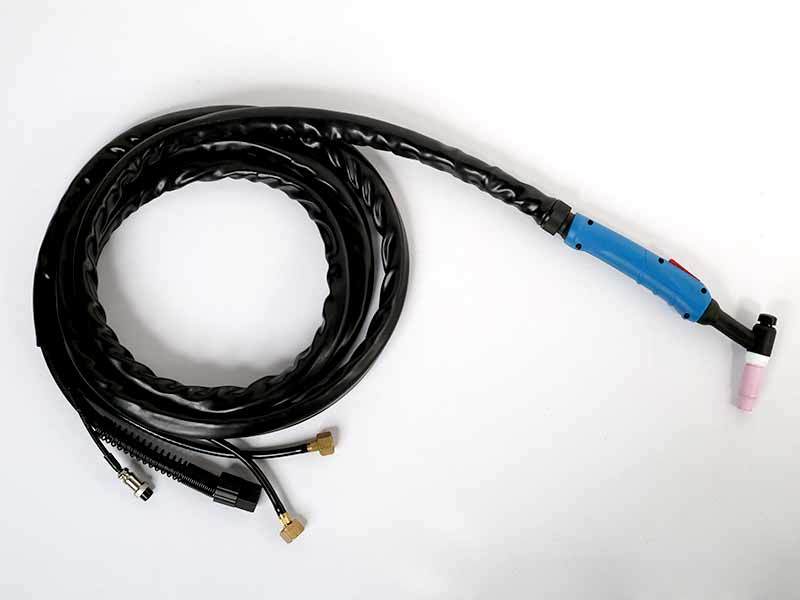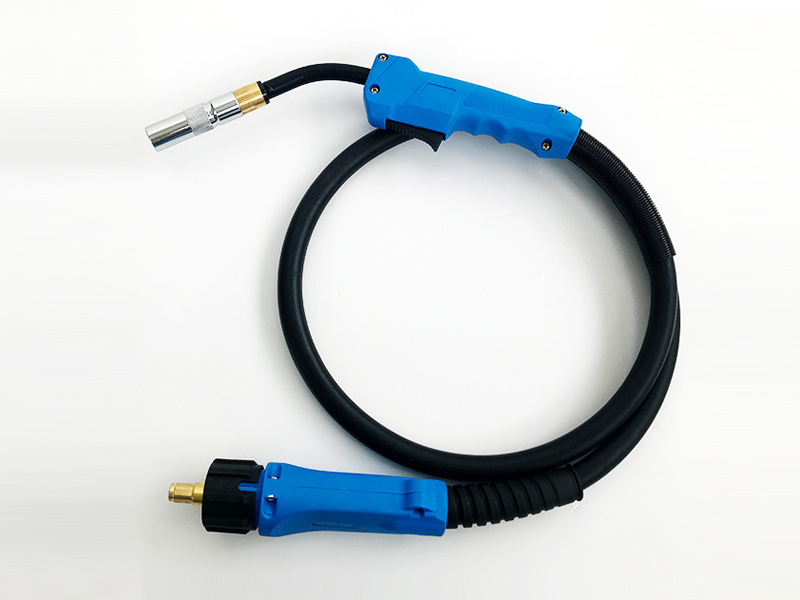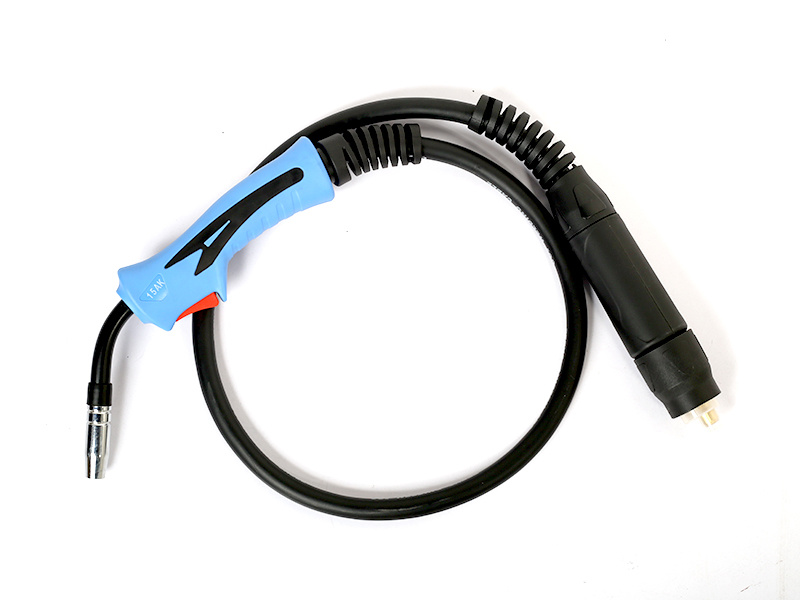language
Plasma Welding Torch: A Game Changer in Metal Joining Solutions
Aug 25,2025
Plasma Welding Torch: A Game Changer in Metal Joining Solutions
Introduction to Plasma Welding Technology
Plasma welding is an advanced technique that utilizes a high-temperature plasma arc to join metals with exceptional precision and strength. This innovative method has emerged as a **game changer** in the metal joining industry, offering significant advantages over traditional welding technique
Plasma Welding Torch: A Game Changer in Metal Joining Solutions
Introduction to Plasma Welding Technology
Plasma welding is an advanced technique that utilizes a high-temperature plasma arc to join metals with exceptional precision and strength. This innovative method has emerged as a **game changer** in the metal joining industry, offering significant advantages over traditional welding techniques. Plasma welding torches are designed to deliver focused energy that allows for deeper penetration and faster welding speeds, making them ideal for various applications.
Understanding Plasma Welding: The Basics
Plasma welding involves creating a high-velocity jet of ionized gas (plasma) that melts the base materials and filler metal together. Unlike conventional welding methods, plasma welding maintains a stable arc that can be precisely controlled, resulting in cleaner welds and reduced distortion.
Key Components of a Plasma Welding Torch
To appreciate the capabilities of plasma welding torches, it’s essential to understand their main components:
- Nozzle: Focuses and shapes the plasma arc.
- Electrode: Generates the plasma arc by ionizing the gas.
- Gas Supply: Provides the necessary gases (typically argon or nitrogen) to create the plasma.
- Cooling System: Prevents overheating and maintains optimal operating conditions.
The Working Principle of Plasma Welding
The process begins by creating an electric arc between the electrode and the workpiece. The gas is then introduced into the arc region, where it becomes ionized, forming plasma. This plasma jet is directed toward the base metals, melting them and allowing for a strong metallurgical bond to form once cooled.
Advantages of Plasma Welding Torches
Plasma welding torches offer numerous benefits, making them increasingly popular in various industries. Here are some of the most notable advantages:
1. Precision and Control
The focused energy of plasma welding allows for precise control over the heat input, resulting in minimal distortion and a cleaner finish. This level of precision is particularly beneficial when working with thin materials.
2. Versatility in Applications
Plasma welding can be used on a wide range of materials, including stainless steel, aluminum, and even exotic alloys. This versatility makes plasma welding torches suitable for industries such as aerospace, automotive, and construction.
3. High Welding Speeds
With the ability to produce deep penetration welds quickly, plasma welding significantly reduces overall production times. This efficiency translates to increased productivity and lower labor costs.
4. Reduced Heat Affected Zone (HAZ)
The controlled nature of plasma welding results in a smaller heat-affected zone compared to traditional welding methods. This characteristic reduces the risk of metallurgical changes in the surrounding material, preserving the integrity of the workpiece.
5. Improved Weld Quality
Plasma welding produces consistent and high-quality welds with minimal imperfections. This reliability is crucial in industries where structural integrity is paramount.
Applications of Plasma Welding Torches
The versatility of plasma welding torches makes them suitable for various applications across multiple industries. Here are some key areas where plasma welding excels:
Aerospace Manufacturing
In the aerospace sector, weight reduction and strength are critical factors. Plasma welding allows for the joining of lightweight materials while maintaining structural integrity, making it ideal for aircraft components.
Automotive Fabrication
As the automotive industry continues to evolve, manufacturers are increasingly turning to plasma welding for assembling components. Its speed and precision are invaluable in producing high-quality parts for vehicles.
Electronics and Electrical Engineering
Plasma welding is gaining traction in the electronics industry, particularly for soldering circuit boards and connecting delicate components. The low heat input ensures that sensitive parts remain undamaged.
Construction and Industrial Applications
From pipelines to structural beams, plasma welding torches are employed in various construction projects. Their ability to handle thick materials with efficiency makes them a preferred choice among professionals.
Choosing the Right Plasma Welding Torch
Selecting the right plasma welding torch requires careful consideration of various factors to ensure optimal performance. Here are key aspects to evaluate:
1. Power Requirements
Assess the power output needed for your specific applications. Plasma welding torches come in various power ratings, and choosing the correct one is essential for achieving the desired results.
2. Gas Compatibility
Ensure that the torch is compatible with the gases you plan to use. Argon and hydrogen are commonly used, but some applications may require specific gas mixtures for optimal performance.
3. Torch Design and Ergonomics
Consider the design and ergonomics of the torch. A well-designed torch can significantly improve user comfort and control during welding operations.
4. Brand Reputation and Support
Choose reputable brands known for high-quality products and excellent customer support. This can make a significant difference in your overall experience and satisfaction with the equipment.
Maintenance Tips for Plasma Welding Torches
To ensure longevity and optimal performance of your plasma welding torch, regular maintenance is essential. Here are some tips to keep your torch in top condition:
1. Regular Inspection
Frequent inspections of the torch components, including the nozzle and electrode, will help identify wear and tear early. Replace parts as necessary to maintain performance.
2. Clean the Torch After Use
Cleaning the torch after each use prevents the buildup of contaminants that can affect performance. Remove any debris and ensure that the gas passages are clear.
3. Proper Storage
Store the plasma welding torch in a dry, clean environment when not in use. Proper storage will protect it from damage and prolong its lifespan.
4. Follow Manufacturer Guidelines
Always follow the manufacturer's guidelines for maintenance and operation. Adhering to these recommendations ensures safety and optimal performance.
Future Trends in Plasma Welding Technology
As technology continues to advance, plasma welding is expected to evolve further. Here are some trends to watch in the coming years:
1. Automation Integration
The integration of automation and robotics in plasma welding processes is set to enhance efficiency and precision. Automated systems can reduce labor costs and improve productivity.
2. Hybrid Welding Techniques
Combining plasma welding with other welding methods, such as laser welding, may lead to enhanced capabilities and applications, further broadening the versatility of plasma technology.
3. Eco-Friendly Practices
With a growing emphasis on sustainability, the development of eco-friendly plasma welding technologies is likely to gain traction. This can include the use of alternative gases and energy-efficient systems.
FAQs About Plasma Welding Torches
1. What materials can be welded using a plasma torch?
Plasma welding torches can join various materials, including stainless steel, aluminum, copper, and even some plastics.
2. How does plasma welding differ from TIG welding?
While both processes use an electric arc to melt metals, plasma welding produces a more focused arc and a higher temperature, allowing for deeper penetration and faster welding speeds.
3. Is plasma welding suitable for thin materials?
Yes, plasma welding is ideal for thin materials due to its precision and control, which minimizes distortion.
4. What safety precautions should be taken when using a plasma welding torch?
Always wear appropriate personal protective equipment (PPE), including gloves, goggles, and protective clothing. Ensure proper ventilation in the workspace to avoid harmful fumes.
5. Can plasma welding be used in outdoor applications?
While plasma welding can be performed outdoors, it is essential to consider environmental factors such as wind and moisture that may impact the welding process.
Conclusion
In summary, the plasma welding torch stands out as a revolutionary tool in the metal joining landscape. Its precise control, high-speed capabilities, and versatility make it an indispensable asset across various industries. As plasma welding technology continues to advance, its potential applications will only expand, further solidifying its status as a game changer in modern fabrication. Investing in plasma welding technology not only enhances productivity but also promotes high-quality results that meet the demands of today’s rigorous manufacturing standards.
Add
Xing village, lvgongbao town, renqiu city, hebei province, china









